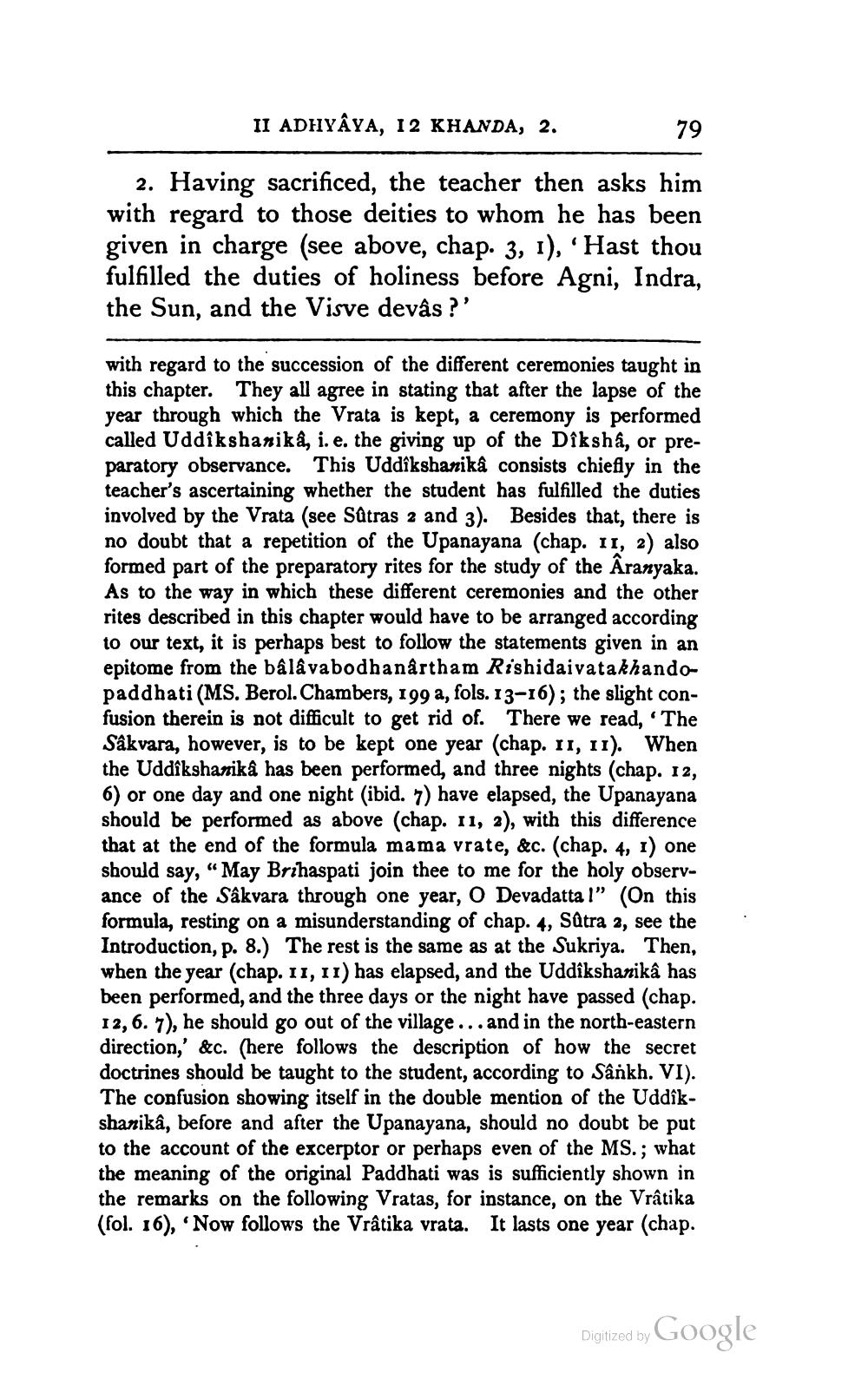________________
II ADHYAYA, 12 KHANDA, 2.
79
2. Having sacrificed, the teacher then asks him with regard to those deities to whom he has been given in charge (see above, chap. 3, 1), 'Hast thou fulfilled the duties of holiness before Agni, Indra, the Sun, and the Visve devâs ?'
with regard to the succession of the different ceremonies taught in this chapter. They all agree in stating that after the lapse of the year through which the Vrata is kept, a ceremony is performed called Uddikshanika, i. e. the giving up of the Dîkshâ, or preparatory observance. This Uddikshanikâ consists chiefly in the teacher's ascertaining whether the student has fulfilled the duties involved by the Vrata (see Satras 2 and 3). Besides that, there is no doubt that a repetition of the Upanayana (chap. 11, 2) also formed part of the preparatory rites for the study of the Aranyaka. As to the way in which these different ceremonies and the other rites described in this chapter would have to be arranged according to our text, it is perhaps best to follow the statements given in an epitome from the bâlâvabodhanårtham Rishidaivatakhandopaddhati (MS. Berol. Chambers, 199 a, fols. 13-16); the slight confusion therein is not difficult to get rid of. There we read, The Sâkvara, however, is to be kept one year (chap. II, 11). When the Uddîkshanikå has been performed, and three nights (chap. 12, 6) or one day and one night (ibid. 7) have elapsed, the Upanayana should be performed as above (chap. 11, 2), with this difference that at the end of the formula mama vrate, &c. (chap. 4, 1) one should say, “May Brihaspati join thee to me for the holy observance of the Sâkvara through one year, O Devadatta I” (On this formula, resting on a misunderstanding of chap. 4, Sætra 2, see the Introduction, p. 8.) The rest is the same as at the Sukriya. Then, when the year (chap. 11, 11) has elapsed, and the Uddikshanikâ has been performed, and the three days or the night have passed (chap. 12, 6. 7), he should go out of the village ... and in the north-eastern direction,' &c. (here follows the description of how the secret doctrines should be taught to the student, according to Sânkh. VI). The confusion showing itself in the double mention of the Uddikshanika, before and after the Upanayana, should no doubt be put to the account of the excerptor or perhaps even of the MS.; what the meaning of the original Paddhati was is sufficiently shown in the remarks on the following Vratas, for instance, on the Vrâtika (fol. 16), Now follows the Vrâtika vrata. It lasts one year (chap.
Digitized by Google




